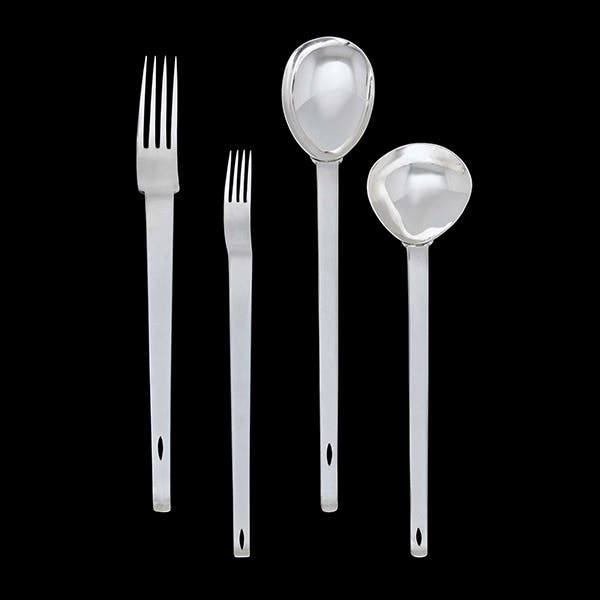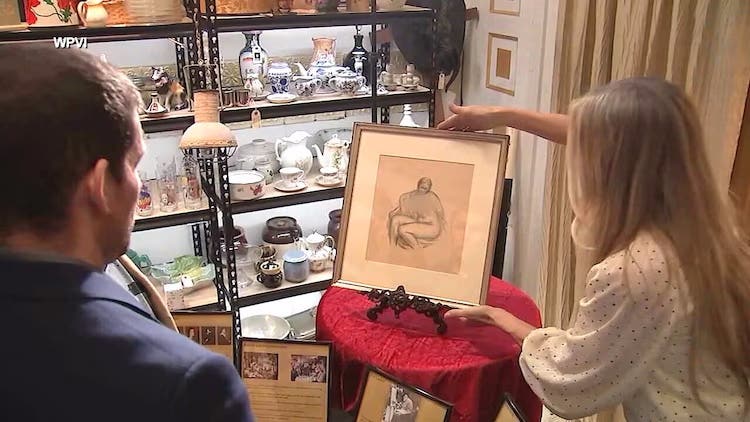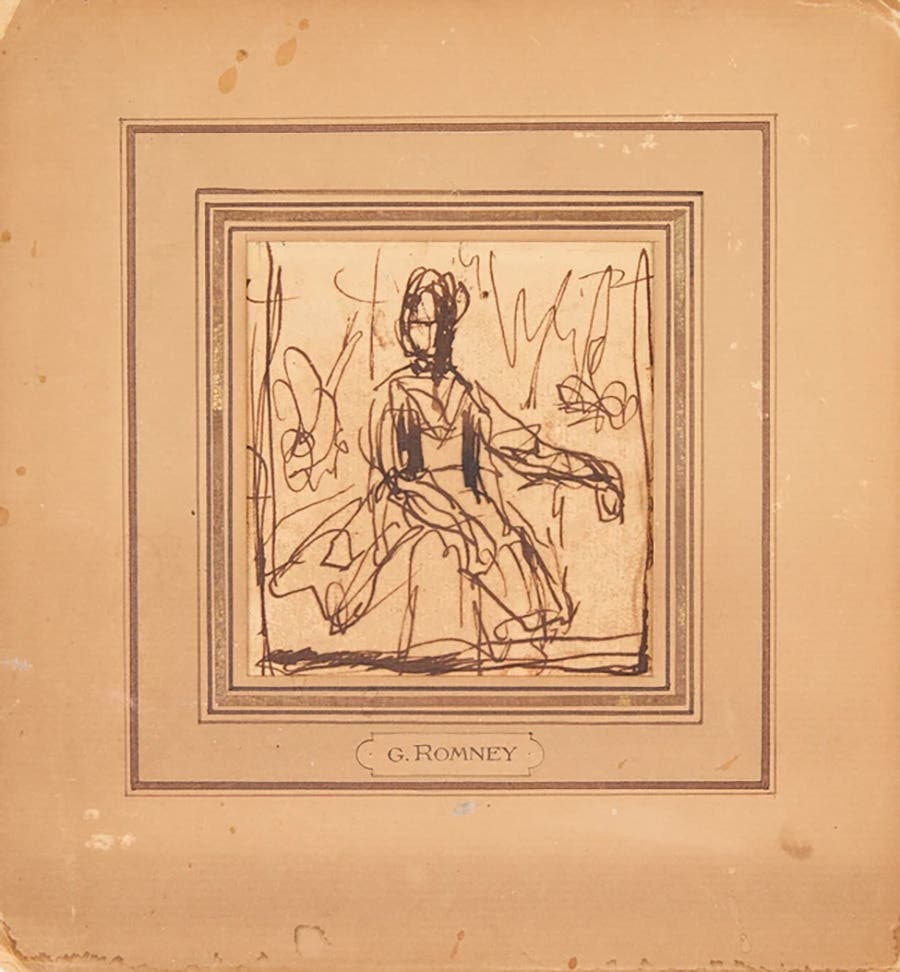Environmental hazards handily destroy value
No one enjoys losing value on an investment, especially when it’s preventable. In a special feature, Ask the Experts columnist Dr. Anthony J. Cavo shares advice for avoiding lost value on art and antiques by protecting pieces against environmental hazards.
Recently, I was called to appraise a small assortment of artwork that had been collected by my client’s late husband. She knew nothing about the artwork except that it “might be worth a couple of hundred dollars.”
There were 21 pieces of unframed art, all large, all pencil signed, titled and numbered by a variety of known artists. The pieces had been stored in a plastic folder in the garage and all were damaged to varying degrees by mold. What should have been an appraisal for
$4,065 turned out to be an appraisal for less than $400. The lesson: $4,000 + uncontrolled climate and humidity = $400 and the loss of 21 pieces of art, none of which were valuable enough to justify the cost of mold mitigation.
She did have another batch of unframed original art which had fortunately been stored in her bedroom, just above the garage, less than 12 feet away. This batch, consisting of 13 pieces of art by a famous contemporary artist, was in excellent condition, having been stored in a climate controlled area; the group was appraised for $56,000. This clearly, if not dramatically, illustrates the effect of environmental factors on paper.
Environmental influences and storage conditions are possibly the two most important factors in the preservation of antiques. Temperature, humidity and light must be considered when storing and preserving antiques and collectibles. Insects, rodents, dust, smoke, acidity, improper handling, pollution and ocean air are other important concerns. Paintings, paper, canvas, metals, wood, glass, ivory, bone and textiles must all be protected. Rodents and Psocoptera (book lice) will eat the glue in book bindings as well as paper contaminated with microscopic molds. Moths and rodents will eat the cloth bindings found in many books as well as a variety of textiles, and the larvae or grubs of many beetle species will bore through and digest wood.
Temperature, humidity and light, however, are probably the principal culprits in the destruction of all types of antiques, and surprisingly, the destructive factors over which you have the most control.
As a general rule, if the temperature and humidity in a room is comfortable for you, it is comfortable for your antiques. The ideal humidity for most antiques from paper to furniture ranges between 35 to 55 percent saturation with a temperature of 65 to 73 degrees Fahrenheit (with 65 degrees the most optimal though not practical for everyday living). Maintain a distance of at least 2 feet between your antiques and any heat or cooling source (radiators or air conditioners). Low humidity can cause drying in any antique of organic origin such as wood, textiles and paper. Textiles and paper will become brittle; wood will shrink and crack.
This article originally appeared in Antique Trader magazine
Learn about subscribing to Antique Trader magazine for just $1 per issue!
The viscoelastic nature of wood that allows it to be bent and shaped will also respond to extremes in humidity. If the humidity is too low, joints in furniture will loosen, veneers and marquetry will crack and peel, glue will dry, the furniture will become unstable and may become permanently deformed or split and fall apart. Wood, as is commonly believed, does not dry out as a result of not being properly oiled or “fed”. Furniture dries out as a result of being stored in areas of low humidity such as attics. With regard to oiling and polishing of furniture, as a general guide, application of a high quality, natural paste wax with a soft, lint-free cloth once or twice a year will afford protection from dust and moisture. Never polish the hardware on early, valuable antiques.
High humidity will cause moisture that can lead to mold formation on textiles, paper and wood, and swelling of wood with subsequent warping of wood and veneers. The effect of high humidity on textiles is opposite that of wood: wood swells, textiles tend to shrink in length while swelling in width, a change that is irreversible. Extremes in humidity will also lead to paint loss on paintings. Most large hardware stores offer inexpensive combination thermometer/hygrometers for home use that will monitor the temperature and humidity in any room. Humidifiers or dehumidifiers may be used to temper the environment of a room or storage area.
Natural – and even artificial light to some extent – will damage and discolor antiques of all types; many museums will not even allow flash photography. Furniture, textiles, paper, photographs, carpets and even glass will become discolored and fade with exposure to light. Avoiding direct sunlight is crucial in protecting your collection. Older 19th to early 20th century glass will tend to discolor, often turning a variety of shades of purple if left in direct sunlight as a result of the manganese that was used as a tinting agent to offset the pigmentation of iron in the glass.
If it is not practical to draw the shades and drapes to block sunlight, you might want to consider using an ultraviolet shield on your windows. These may be ordered online; 3M manufactures a Sun Control film that is applied to the inside of windows that will block UV light and up to 60 percent of the sun’s heat while allowing passage of 70 percent of the sun’s light minus the harmful rays. This will not only protect your antiques but your carpets, wood flooring, paneling, wallpaper and paint as well. You might find the benefit far outweighs the cost.
When framing antique prints, posters, photographs and engravings, acid-free matting and backing should be used as well as UV protective glass. In addition to aesthetic benefits, acid-free matting protects the piece from acid degradation and prevents contact between the work and the glass, which may react chemically with paper-based antiques resulting in degradation of the paper.
When storing photographs, books and works on paper, it is recommended to store them in PVC-free (polyvinyl chloride) plastic; these may be ordered online but can be costly if your collection is large. SC Johnson and Company makes Ziploc food storage bags that are PVC and BPA (bisphenol A) free. I store my photographs in these and have for many years; I leave them un-zipped, however. Plastics containing PVC generate acid which will fade and degrade paper.
The way in which you handle your antiques is also a major consideration in their preservation. Improper handling may cause damage that is as destructive as uncontrolled temperature and humidity. Cotton gloves should be worn when handling paper-based, metal and quality wood pieces. Naturally occurring oils on the hands may cause damage to any of these items. Paper may degrade, metals may discolor and body oils on wood may attract insects that feed on those oils and destroy the finish.
Natural and even artificial light to some extent will damage and discolor antiques of all types.
The proper moving of furniture is also essential to avoid damage and loss. Chairs should be carried by the seat rails and never lifted by the arms, stiles or crest rails. Table tops should be moved separately from the base if possible, as the tops or even the aprons can be cracked and broken if roughly handled. Drawers should be removed from furniture and the case lifted from the bottom rather than the top or the cross rails that frame the drawers. Doors on cabinets should be secured preferably by a tight plastic wrap rather than rope, which may cause scratches and rope burns during the move. Never drag heavy pieces across the floor, this will cause weakening and even destruction of the joints. Framed art, mirrors and marble tops should be moved vertically to prevent cracking, and heavier furniture should never be placed in a moving van on its legs, which will loosen during the trip.
When storing antique linens, make sure they are freshly washed and free of starch, which will tend to discolor the fabric, especially in areas where the linen has been folded. Rolling linens around acid free tubes rather than folding them is ideal. Expensive quilts are best stored clean, open and flat on an unused bed or a well-padded quilt rack and covered with a clean cotton sheet. If this is not practical and you haven’t enough space to store rolled quilts, then folding them in a wide accordion-pleated pattern and placing them in a cedar chest is recommended.
Cedar chests, or hope chests, are readily available and inexpensive, although the interior usually needs to be renewed, something easily accomplished. Vacuum the inside of the chest using the brush attachment and then the crevice attachment to access the angles and corners. Many people recommend using a mixture of water and bleach or vinegar, however, I do not. Why introduce moisture where moisture can be harmful, especially to a surface that is going to be sanded in any case?
After vacuuming, use a fine grit sandpaper (220 grit should do it) or 0000 steel wool to sand the entire inner surface of the chest; always sand in the direction of the grain. You will find it doesn’t take much elbow grease to revitalize the interior and obtain the natural, fresh smell of cedar. After sanding, vacuum the chest once again; you may also want to rub the freshly sanded surface with natural cedar oil applied to a clean, non-shedding cloth; microfiber cloths work best. Cedar chests are not only invaluable for storing textiles but almost anything you may care to preserve.
It is essential to remember that your antiques exist because someone took enough care of them so future generations might enjoy the beauty and history of these pieces. Your home may not be a museum but you are the curator, archivist and preservationist of every piece within its walls. As these pieces become scarcer, it is your obligation to maintain, safeguard and conserve your collection from the ever-present effects of the environment.








